Back to the list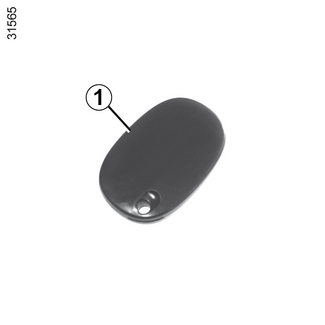
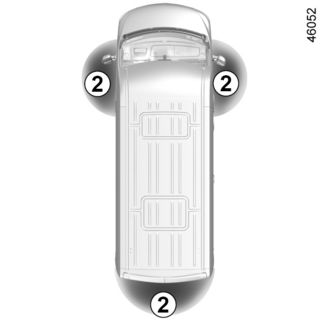
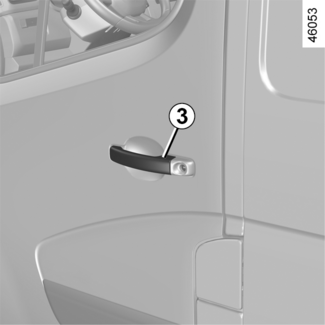
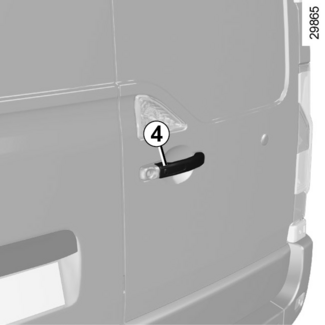
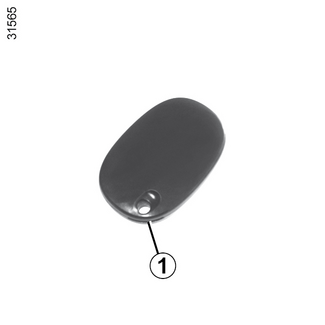
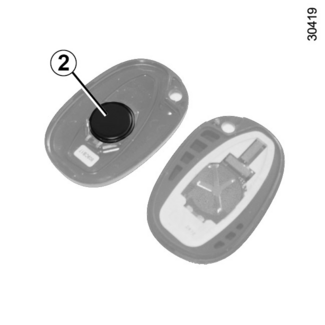
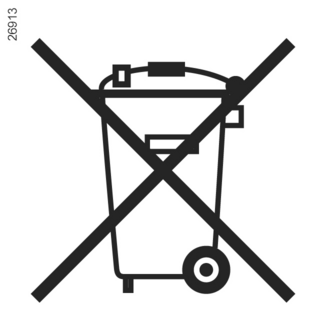
Hands-free access transmitter-receiver
Hands-free access transmitter-receiver
Use
WARNING
Driver's responsibility when parking or stopping the vehicle
Never leave an animal, child or adult who is not self-sufficient alone in your vehicle,
even for a short time.
They may pose a risk to themselves or to others by starting the engine, activating
equipment such as the electric windows or by locking the doors.
Also, in hot and/or sunny weather, please remember that the temperature inside the
passenger compartment increases very quickly.
RISK OF DEATH OR SERIOUS INJURY.

For vehicles equipped with transmitter/receiver 1, in addition to the functions of the remote control, it can be used to lock/unlock
without using the remote control locking unit when it is in access zone 2.
Note: the hands-free access transmitter-receiver only works with the front doors and the
luggage compartment door.

It is powered by a battery which can be replaced HANDS-FREE ACCESS TRANSMITTER-RECEIVER: BATTERY.
Interference
Interference by factors in the immediate vicinity (external installations or the use
of equipment operating on the same frequency as the remote control) may affect the
operation of the remote control.
Unlocking the vehicle

With the transmitter-receiver in one of the access zones 2, press button 3 or 4: all of the doors will unlock.
The hazard warning lights flash once to indicate that the doors have been unlocked.
Locking the vehicle

With the transmitter-receiver in one of the access zones 2, press button 3 or 4: all of the doors will lock.
The hazard warning lights flash once for 4 seconds to indicate that the doors have been locked.
Note: when a door or the luggage compartment door is open or is not properly closed, all
of the doors and the luggage compartment door lock then unlock quickly without the
hazard warning lights flashing.
Hands-free access transmitter-receiver: battery
WARNING
When replacing:
- make sure that the batteries are correctly inserted.
Risk of explosion.
- if the flap does not close correctly, do not use and keep out of reach of children.
WARNING
Precautions relating to batteries:
- keep batteries (new or used) out of reach of children;
- do not swallow batteries;
Risk of chemical burns which may lead to death.
- if ingested or inserted into any part of the body, consult a doctor as soon as possible.
WARNING
When they need to be replaced, be sure to use the same or equivalent type of battery
(consult an Approved Dealer).
Replacing the battery
Tip
The batteries are available from approved Dealers, and their service life approximately
two years.
Check that there is no dye on the battery: risk of an incorrect electrical contact.
Tip
When refitting, ensure that the cover is correctly clipped into place.

Use a coin to open the unit via slot 1.

Replace the battery 2 according to the direction marked on the cover.
Note: it is not advisable to touch the electronic circuit in the cover when replacing the
battery.
Operating faults
Tip
Do not throw away your used batteries; give them to an organisation responsible for
collecting and recycling batteries.

If the battery is too weak to ensure correct operation, you will still be able to
lock/unlock the vehicle LOCKING, UNLOCKING THE OPENING ELEMENTS AND DOORS.